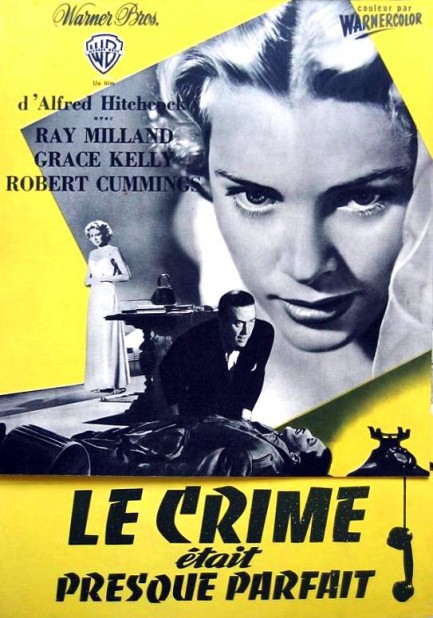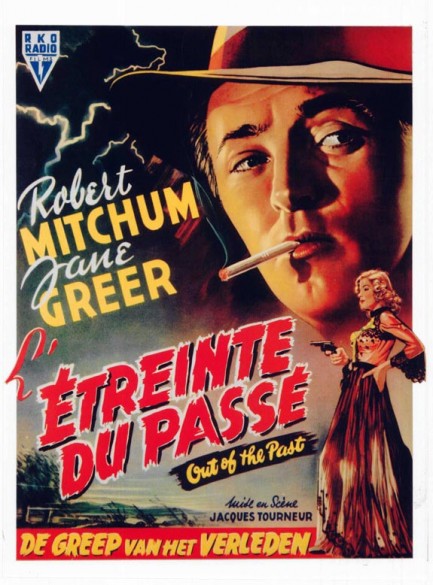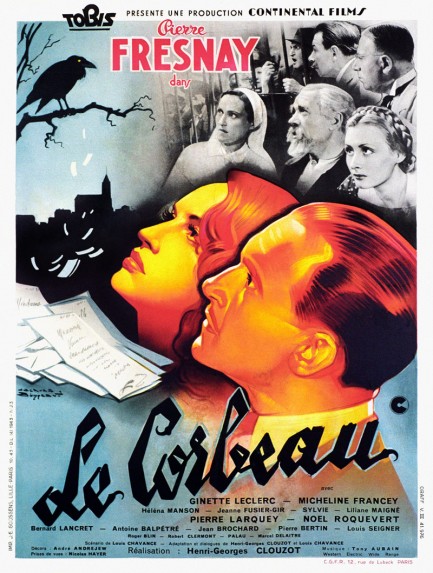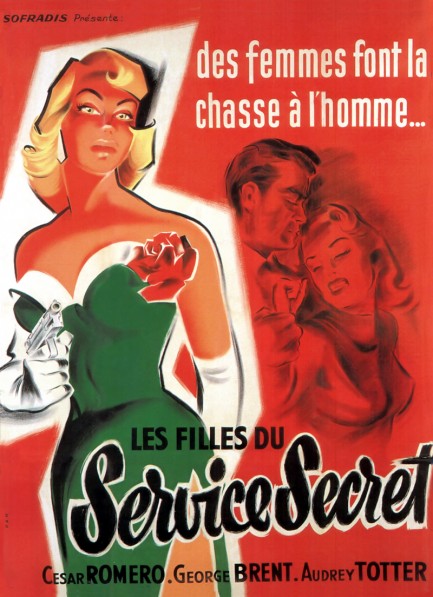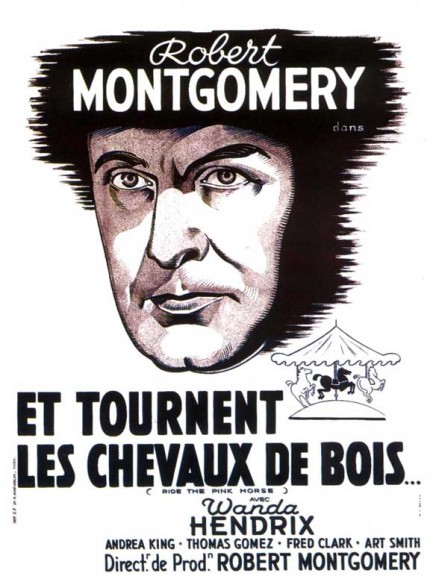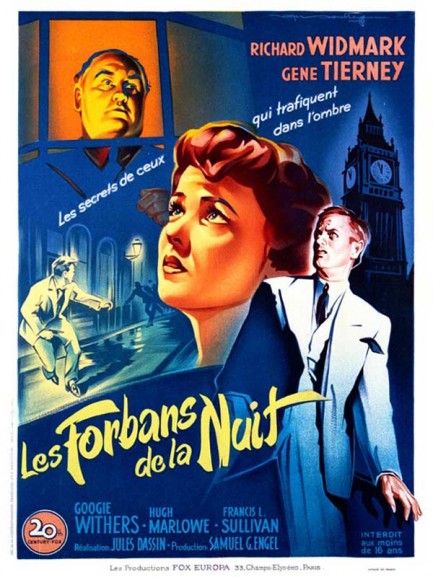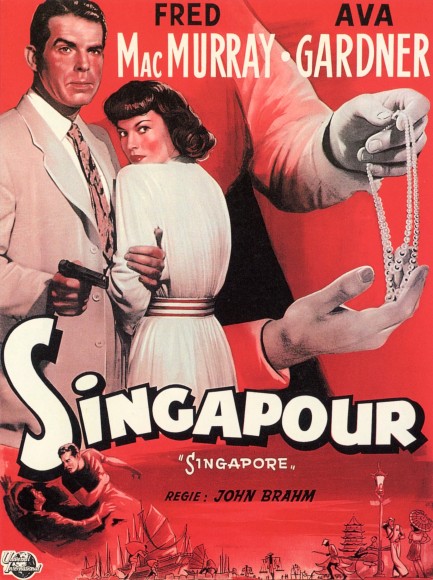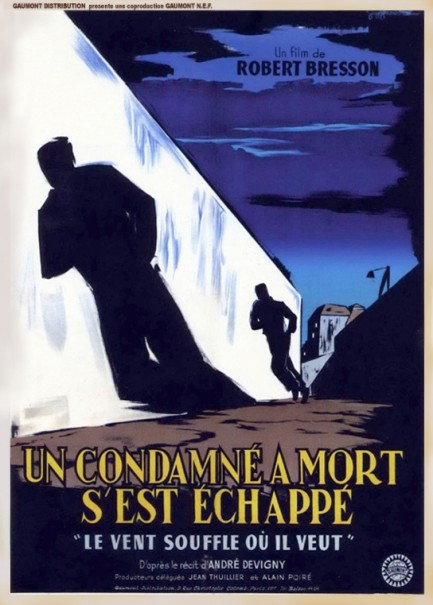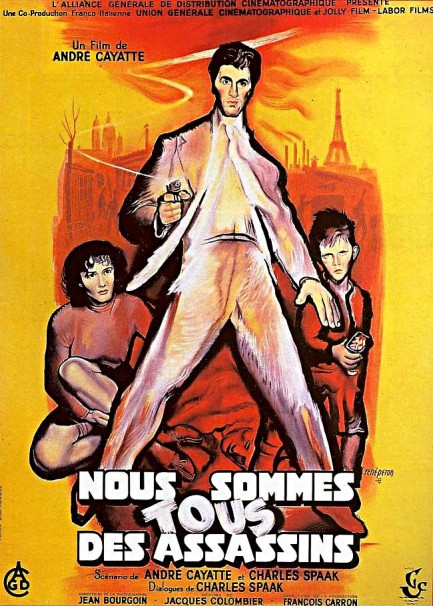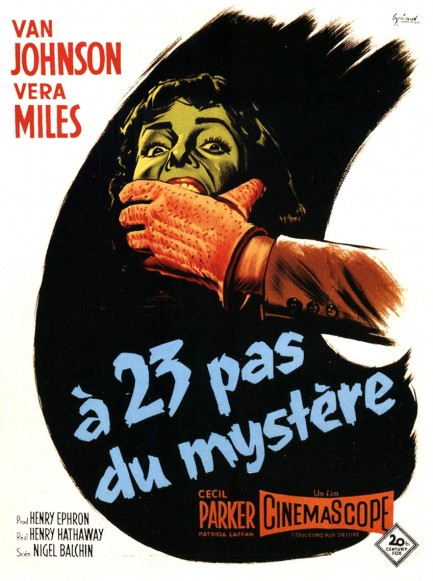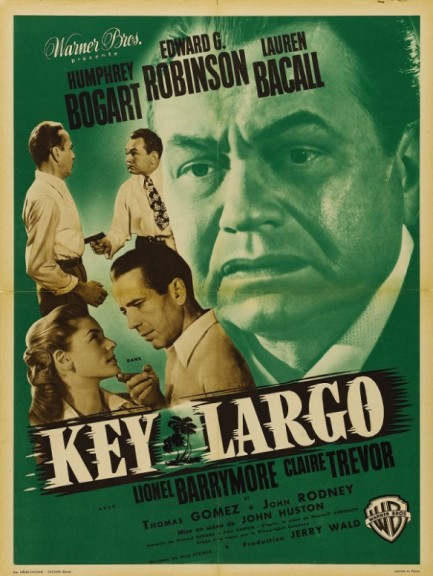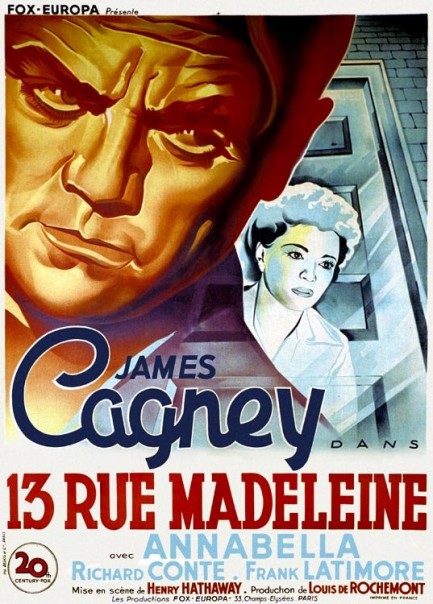 You know the old saying. Once you go witch you'll never want to switch. 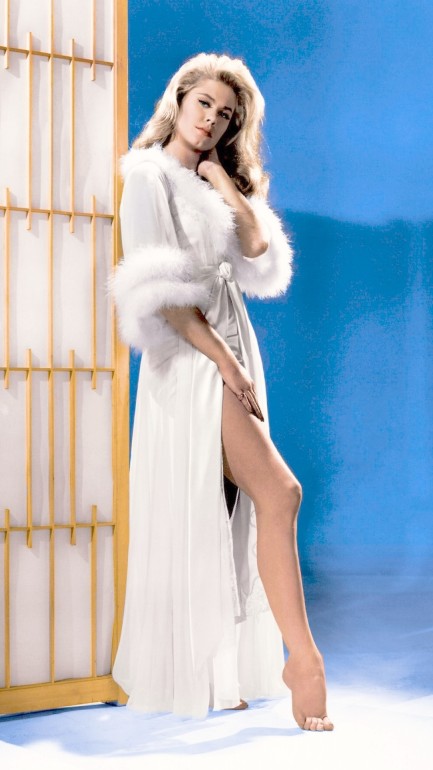
Since we mentioned the television show Bewitched recently, here's its star, the lovely Elizabeth Montgomery, bringing some supernatural qualities to a nightgown in this 1963 photo made to promote her comedy flick Who's Been Sleeping in My Bed? She was born into show business as the daughter of legendary actor and director Robert Montgomery, who boosted Elizabeth's fortunes by casting her in thirty episodes of Robert Montgomery Presents. Having launched her career in television, she worked mainly in that medium going forward but appeared in a few movies, notably in 1963's Johnny Cool. She accumulated credits on some sixty television shows, sang on three soundtracks, and even lent her voice to cartoon characters on The Flintstones and Batman: The Animated Series.
We've been enjoying Bewitched immensely. As a classic sitcom, it mixes a lot of zany problems into a suburban marriage, and enlivens the proceedings with a bit of low wattage sexiness. We think Darrin Stevens, as played so far by Dick York, is a terrible husband, but part of the fun is watching the twerp try to stop Montgomery from using her magical powers. It was a plot contrivance meant extol the virtues of earning what you obtain, but these days reads more like marital domination, mansplaining, and unsupportiveness. Whereas we'd be, “You wanna do what? Zap us over to Budapest for the weekend? Well, sure, honey, I suppose I could free up time for that.” Since Montgomery didn't make much in the way of pulp style entertainment she may not appear here again, but what an appearance. See another Montgomery here.
 The gun is mightier than the pen. 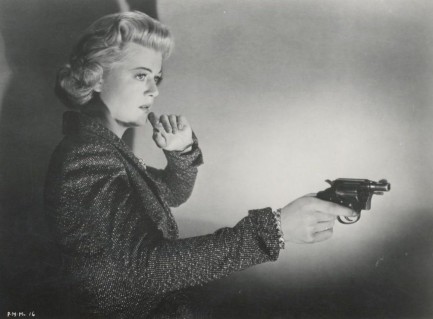
Above: a shot of British actress Angela Lansbury made when she filming 1956's Please Murder Me, in which she starred with Raymond Burr and Dick Foran. Lansbury's first movie was 1944's classic version of Gaslight. In total she had more than fifty cinema roles, but it was on television that she became a major star, beginning with 1950's Robert Montgomery Presents, and continuing through more than two-hundred and fifty episodes of her smash hit series Murder, She Wrote. Personally, if we had to choose a favorite Lansbury role it was as Granny in 1984's gothic horror movie The Company of Wolves. She gets eaten, but not before dispensing wisdom like, “The worst kind of wolves are hairy on the inside,” and, “Never trust a man whose eyebrows meet.” Well, you can generally trust Lansbury. She was an excellent actress and improved almost everything in which she appeared. 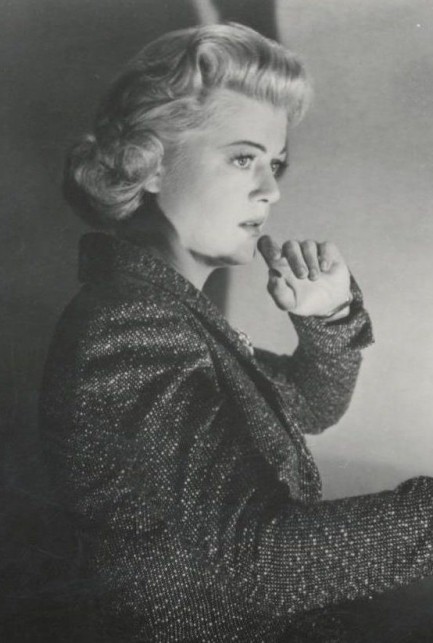
 Robert Montgomery rides into town and trouble soon follows. 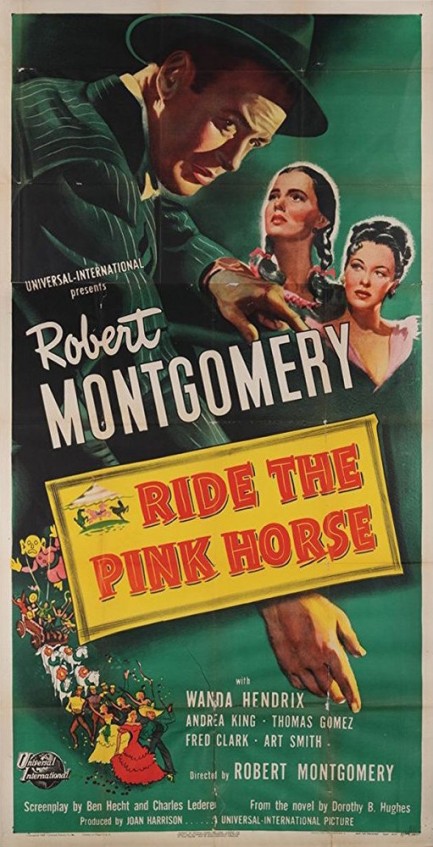
We'd seen the movie adaptation of Dorothy B. Hughes' novel Ride the Pink Horse before, more than once, but decided to watch it again because its premiere date was today in 1947. It differs from the book, of course—it's more streamlined, the real life town of Santa Fe becomes fictional San Pablo, the villains are more proactive, the heartless anti-hero Sailor becomes the not-so-bad Lucky Gagin, and the Mexican girl Pila is an adult instead of a fourteen-year-old. All these changes work fine. The most striking addition is the movie's use of Spanish dialogue, five or six lines worth, untranslated and unsubtitled. It adds authenticity, plus a touch of bonus material for Spanish speakers. Robert Montgomery directs and stars, handling the dual chores solidly. In the end Ride the Pink Horse is a good film noir that has increased in stature over the years. It's always been one of our favorites, but we admit that after seeing so many rote entries it's the quirky ones that tend to stand out. We wouldn't recommend this to novices as their first noir, but if you've seen many and are looking for something that surprises, Ride the Pink Horse will do the job. You can learn more about the movie by reading our detailed write-up about the novel here.
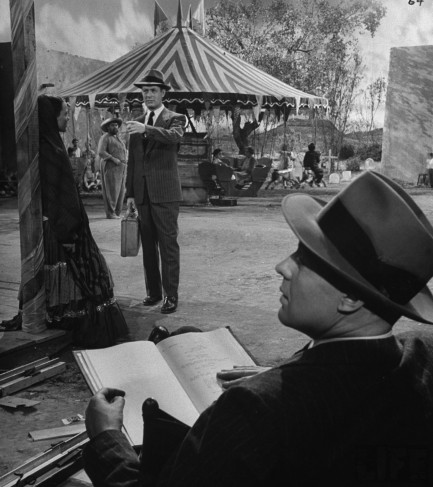 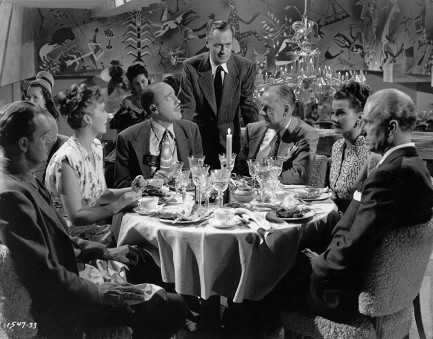 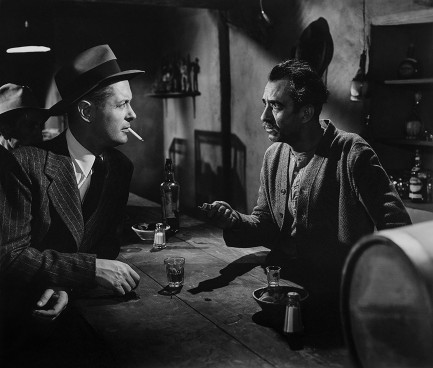 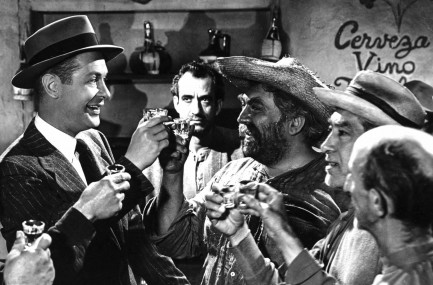 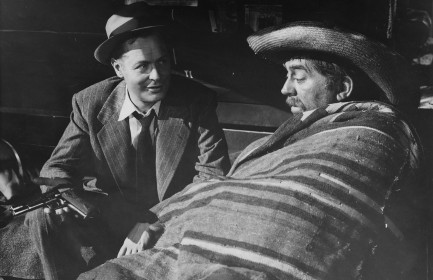 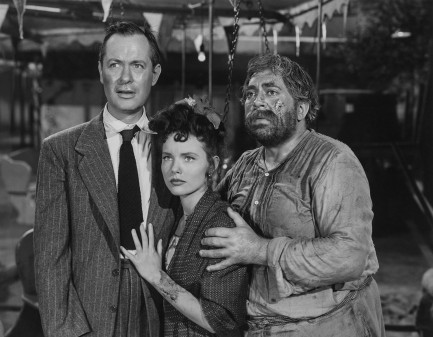 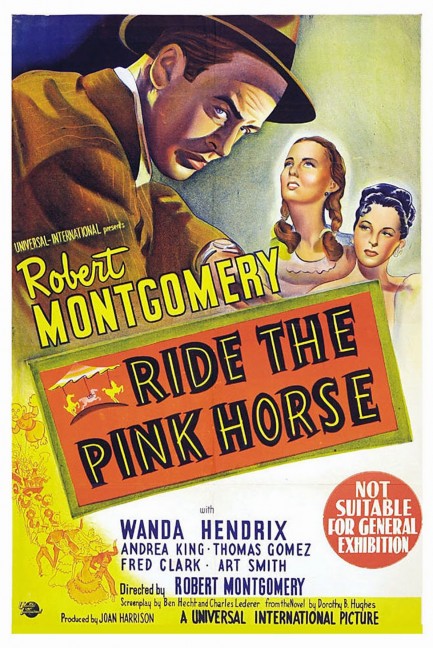
 Philip Marlowe tries not to go under for the third time in Lady in the Lake. 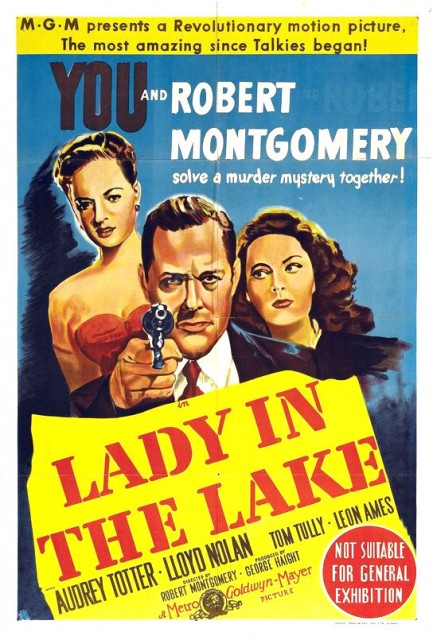
Lady in the Lake, for which you see a promo poster above, was the first motion picture shot almost entirely from the visual perspective of a single character. That character is Raymond Chandler's iconic private dick Philip Marlowe, played by Robert Montgomery, who also directed. As both a mystery and a seeing-eye curiosity, this is something film buffs should check out. You won't think it's perfect. Montgomery's version of Marlowe regularly crosses the line from hard-boiled to straight-up asshole, but that's the way these film noir sleuths were sometimes written.
Though the bad attitude is tedious at times, the mystery is interesting, there's plenty of directorial prowess on display from Montgomery, and a bit of unintentional comedy occurs when he gets knocked cold twice in that first person p.o.v. Seriously, Marlowe, you couldn't see those punches coming? We were reclined on the sofa with glasses of wine in our hands and we could have dodged them without spilling a drop. It's all in good fun, though. Every shamus gets forcibly put to sleep now and again.
If the movie has a major flaw it's that co-star Audrey Totter gives a clinic in overdone facial expressions before overcoming these bizarre poker tells to finally settle into normal human behavior around the halfway mark. Despite that bit of weirdness, film noir fans will like this. Those new to the genre maybe will find it too strange to fully enjoy. But it's indisputably a landmark, and that's worth something. Lady in the Lake premiered in London in late 1946, and went into general release in the U.S. today in 1947.
 Hallucinatory southwestern noir takes readers to a land of saints and sinners. 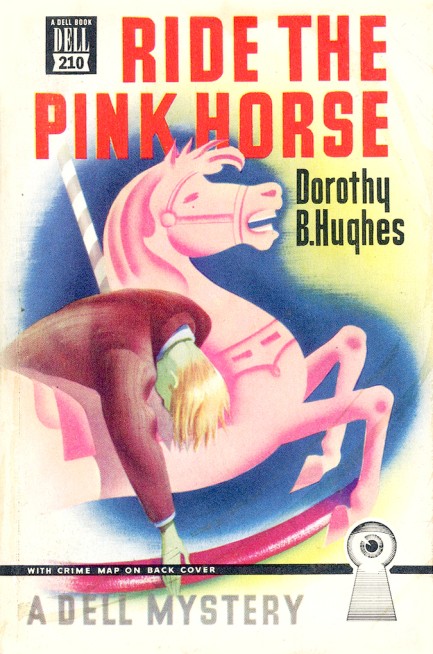
It's said that a good book teaches you how to read it. The author instructs while building the story. Dorothy B. Hughes' 1946 crime novel Ride the Pink Horse, which was the source material for the 1947 film noir starring Robert Montgomery, falls into that category. In the story a man wanders around the southwestern U.S. town of Santa Fe, New Mexico, searching for someone he calls the Sen, which is short for the Senator. We suspect the shortening of his title is designed to make it a heterograph with “sin,” because this Illinois senator-turned-crime boss rather sinfully hired out the murder of his wife then shorted the murderer part of his fee. That's why the main character, named Sailor, is adrift in this town. He's followed the Sen there from Chicago to get his money. He plans to find him, confront him, collect payment, then scurry away to Mexico.
But this comes out in trickles. Initially Sailor merely criss-crosses the town, unable to find a hotel room because it's fiesta weekend, with crowds everywhere and processions filling the streets. He sleeps under the canopy of a merry-go-round which features a pink horse. As he keeps going in circles around town more characters emerge—the cop 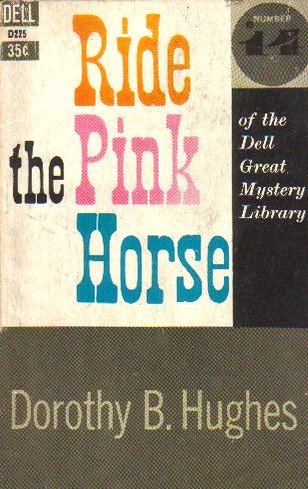 who's trying to solve murder of the senator's wife, the carousel owner who appeals to Sailor's sense of honor, the girl who recalls an innocence he can barely remember, and the beautiful Iris Towers, the focus of his wishes for a better life. who's trying to solve murder of the senator's wife, the carousel owner who appeals to Sailor's sense of honor, the girl who recalls an innocence he can barely remember, and the beautiful Iris Towers, the focus of his wishes for a better life.
Hughes loves symbolic names: there's the Sen, as we already mentioned; there's Iris Towers, dressed in ivory colors and pale of skin; and there's the girl Pila, whose name is the Spanish word for a laundry trough, a place of cleansing. The book is composed of encounters rather than events, hallucinatory meanderings punctuated by tense verbal standoffs. Each tête-à-tête clarifies matters a bit more for the reader. Did Sailor really kill the Sen's wife? Did he ever intend to? Was she ever to be the actual target? Were others involved?
When Sailor goes from seeing the town's Mexican and Native American inhabitants as something other than sub-human, maybe, we think, he isn't irredeemable. But even if he grows in some ways his hatred continues to drive him. He thinks the Sen is vermin. He wonders how such an abomination can even walk upon the Earth. When he follows the Sen into the cathedral this thought passes through his mind: He didn’t know why the dim perfumed cathedral didn’t belch the Sen out of its holy portals.
Hughes is a good writer, a unique stylist, and she gives Ride the Pink Horse the disorienting feeling of taking place in purgatory. It's a fever dream, an acid trip across a constantly shifting landscape, literary rather than pulp in approach, as much Faulkner as it is Chandler, with nothing quite solid or real apart from Sailor's hatred, which is so intense it seems as if it will consume him and leave nothing behind but a cinder. Sailor's racism is appalling, but he's not supposed to be a good man. This town filled with people that frighten and confuse him could be his salvation or his doom. He's the one who has to decide whether to step back from the precipice. Every wise character sees that he's headed for destruction. But the future isn't set. He has a chance for redemption—small, but real. Top marks for this one. 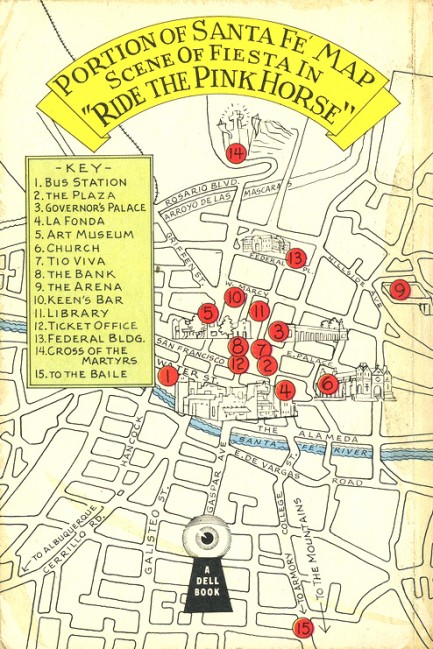
 Only the good go to sleep at night. 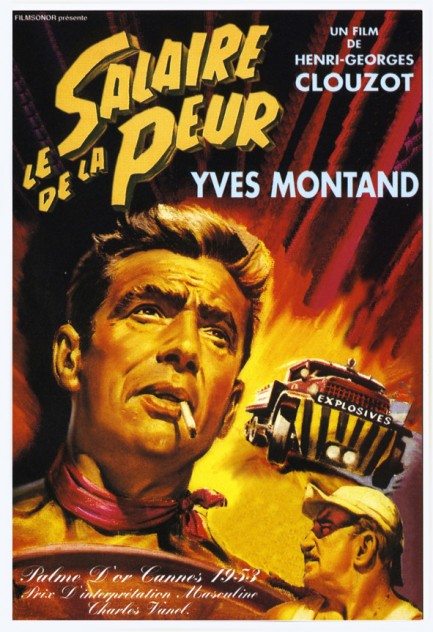
The French coined the term film noir, so it seems only fitting to feature a collection of French posters celebrating the genre. Above and below are fifteen examples promoting films noir from France, Britain, and the U.S., representing some of the best ever produced within the art form, as well as some less celebrated examples that we happen to love. Of those, we highly recommend seeing Le salaire de la peur, for which you see the poster above, and Ride the Pink Horse, below, which played as Et tournent les chevaux de bois in France. Just a word about those films (and feel free to skip ahead to the art, because really, who has time these days to listen to a couple of anonymous internet scribes ramble on about old movies?). 1953’s Le salaire de la peur is about a group of men stranded in an oil company town in the mountains of Latin America. In order to earn the wages to get out, four of them agree to drive two trucks filled with nitroglycerine over many miles of dangerous terrain. The idea is to use the chemicals to put out a raging oil well fire that is consuming company profits by the second, but of course the film is really about whether the men can even get there alive. Le salaire de la peur was critically praised when released in Europe, but in the U.S., political factions raised their ugly heads and got censors to crudely re-edit the prints so as to reduce the movie’s anti-capitalist (and by extension anti-American) subtext. The movie was later remade by Hollywood twice—once in 1958 as Hell’s Highway, and again in 1977 as Sorcerer. The original is by far the best.
1947’s Ride the Pink Horse is an obscure noir, but a quintessential one, in our opinion. If many noirs feature embittered World War II vets as their anti-heroes, Robert Montgomery’s Lucky Gagin is the bitterest of them all. He arrives in a New Mexico border town on a quest to avenge the death of a friend. The plot is thin—or perhaps stripped down would be a better description—but Montgomery’s atmospheric direction makes up for that. Like a lot of mid-century films featuring ethnic characters, the most important one is played by a white actor (Wanda Hendrix, in a coating of what looks like brown shoe polish). It's racist, for sure, but within the universe of the film Lucky Gagin sees everyone around him only as obstacles or allies—i.e., equals within his own distinct worldview. So that makes up for it. Or maybe not. In any case, we think Ride the Pink Horse is worth a look. Thirteen more posters below.
 Strangers when we meet. 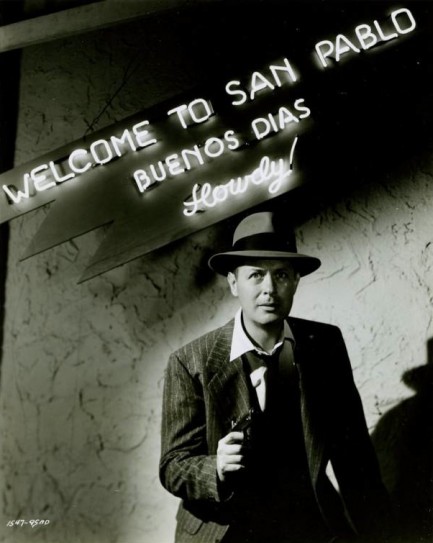
Above, a promo shot of Robert Montgomery from the underappreciated film noir Ride the Pink Horse, 1947.
|
 |

The headlines that mattered yesteryear.
2003—Hope Dies
Film legend Bob Hope dies of pneumonia two months after celebrating his 100th birthday. 1945—Churchill Given the Sack
In spite of admiring Winston Churchill as a great wartime leader, Britons elect
Clement Attlee the nation's new prime minister in a sweeping victory for the Labour Party over the Conservatives. 1952—Evita Peron Dies
Eva Duarte de Peron, aka Evita, wife of the president of the Argentine Republic, dies from cancer at age 33. Evita had brought the working classes into a position of political power never witnessed before, but was hated by the nation's powerful military class. She is lain to rest in Milan, Italy in a secret grave under a nun's name, but is eventually returned to Argentina for reburial beside her husband in 1974. 1943—Mussolini Calls It Quits
Italian dictator Benito Mussolini steps down as head of the armed forces and the government. It soon becomes clear that Il Duce did not relinquish power voluntarily, but was forced to resign after former Fascist colleagues turned against him. He is later installed by Germany as leader of the Italian Social Republic in the north of the country, but is killed by partisans in 1945.
|

|
|

It's easy. We have an uploader that makes it a snap. Use it to submit your art, text, header, and subhead. Your post can be funny, serious, or anything in between, as long as it's vintage pulp. You'll get a byline and experience the fleeting pride of free authorship. We'll edit your post for typos, but the rest is up to you. Click here to give us your best shot.

|
|
















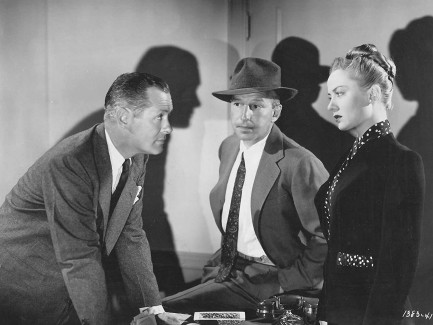
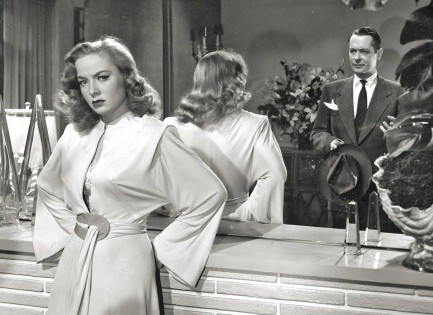
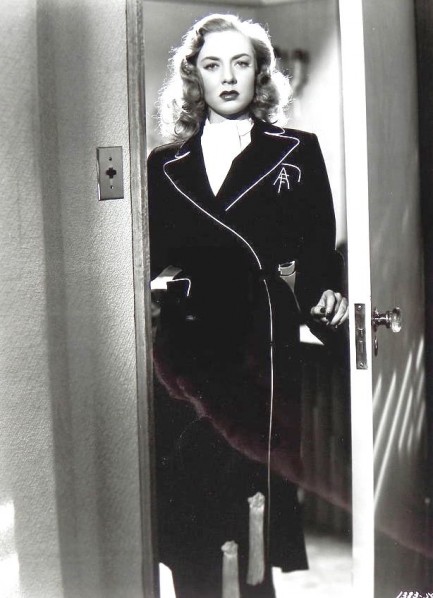
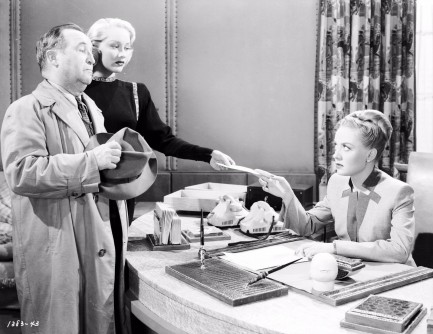
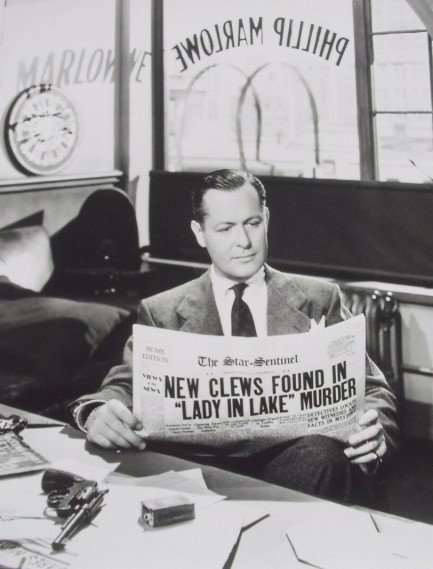
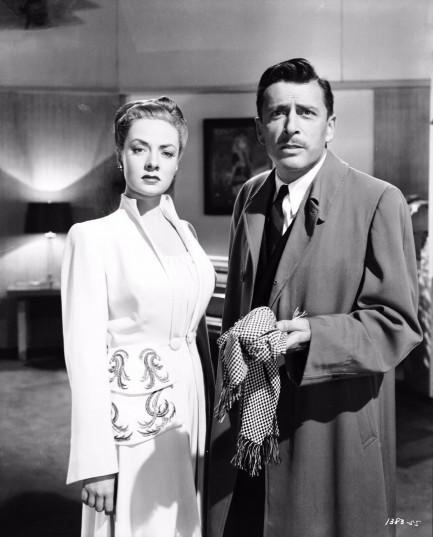
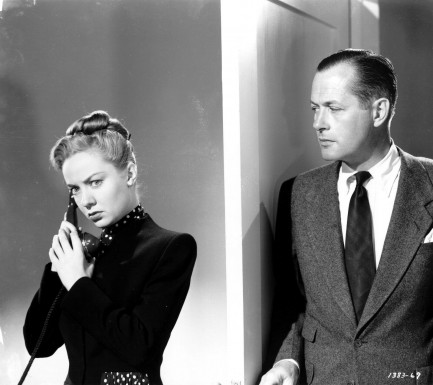
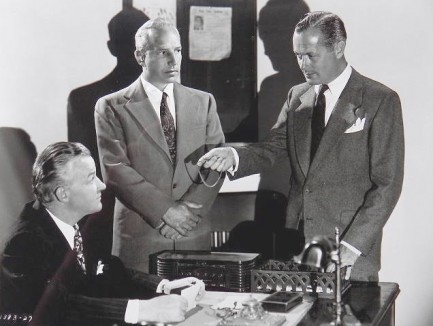
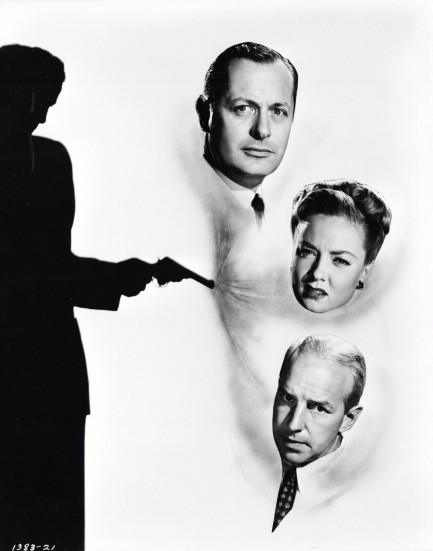


 who's trying to solve murder of the senator's wife, the carousel owner who appeals to Sailor's sense of honor, the girl who recalls an innocence he can barely remember, and the beautiful Iris Towers, the focus of his wishes for a better life.
who's trying to solve murder of the senator's wife, the carousel owner who appeals to Sailor's sense of honor, the girl who recalls an innocence he can barely remember, and the beautiful Iris Towers, the focus of his wishes for a better life.


